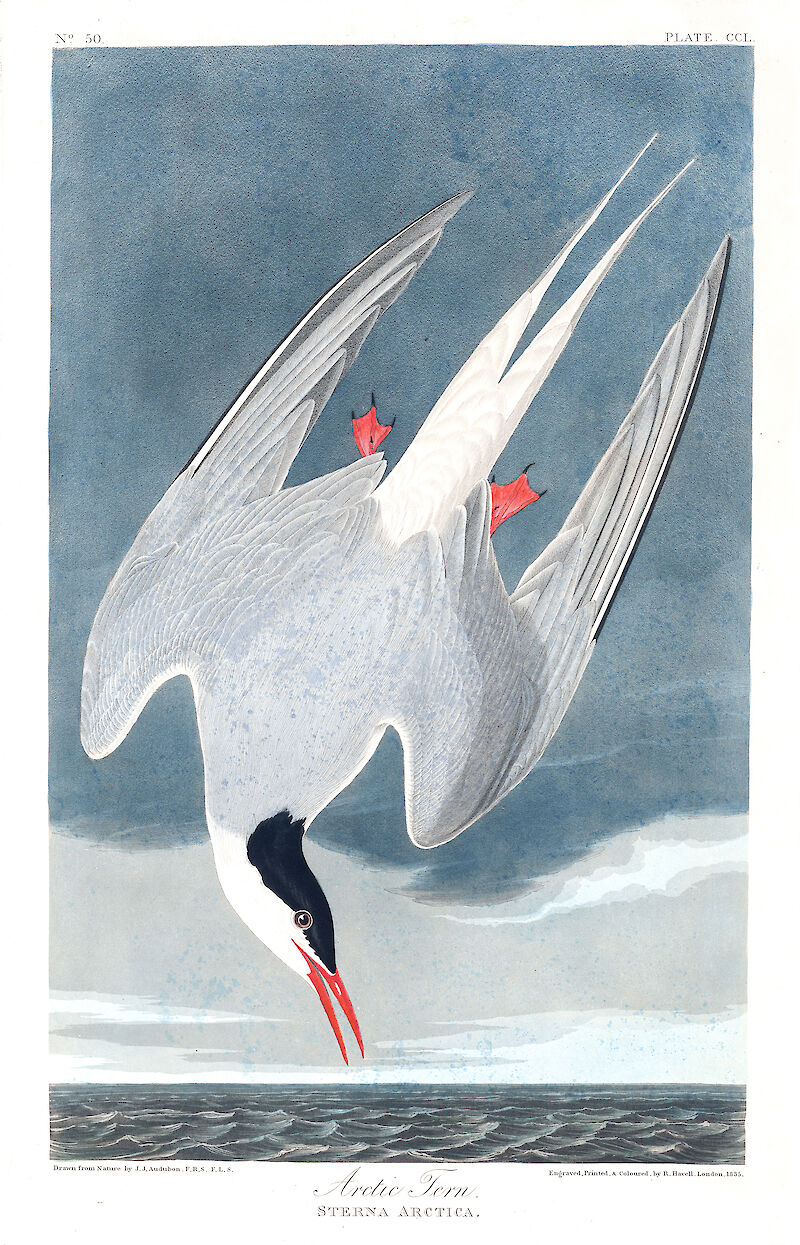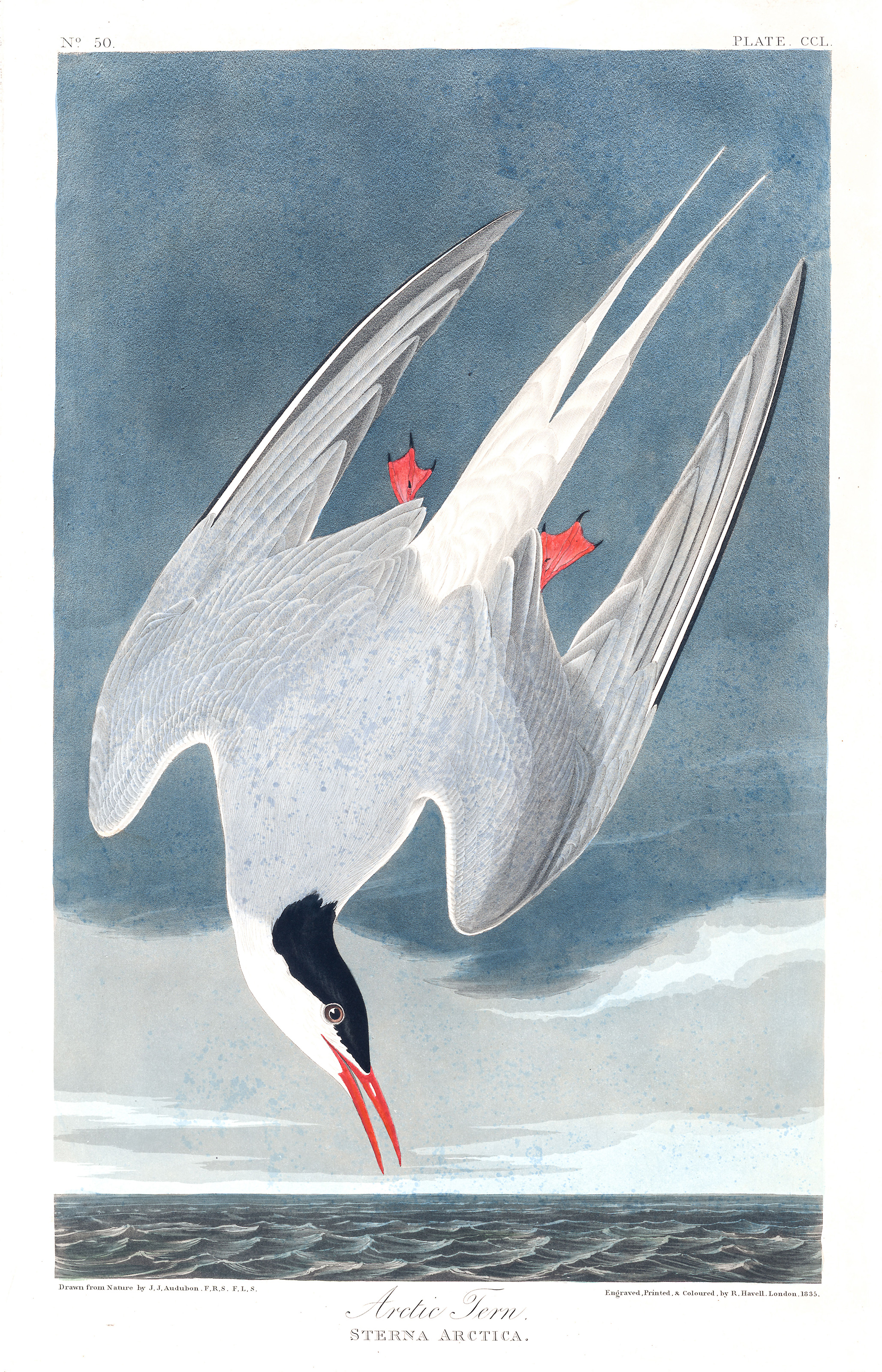


“Light as a sylph, the Arctic Tern dances through the air above and around you. The graces, one might imagine, had taught it to perform those beautiful gambols which you see it display the moment you approach the spot which it has chosen for its nest. Over many a league of ocean has it passed, regardless of the dangers and difficulties that might deter a more considerate traveler. Now over some solitary green isle, a creek or an extensive bay, it sweeps, now over the expanse of the boundless sea; at length it has reached the distant regions of the north, and amidst the floating icebergs stoops to pick up a shrimp. It betakes itself to the borders of a lonely sand-bank, or a low rocky island; there side by side the males and the females alight, and congratulate each other on the happy termination of their long journey. Little care is required to form a cradle for their progeny; in a short time the variegated eggs are deposited, the little Terns soon burst the shell, and in a few days hobble towards the edge of the water, as if to save their fond parents trouble; feathers now sprout on their wings, and gradually invest their whole body; the young birds at length rise on wing, and follow their friends to sea. But now the brief summer of the north is ended, dark clouds obscure the sun, a snow-storm advances from the polar lands, and before it skim the buoyant Terns, rejoicing at the prospect of returning to the southern regions.”
— John James Audubon, from Birds of America
